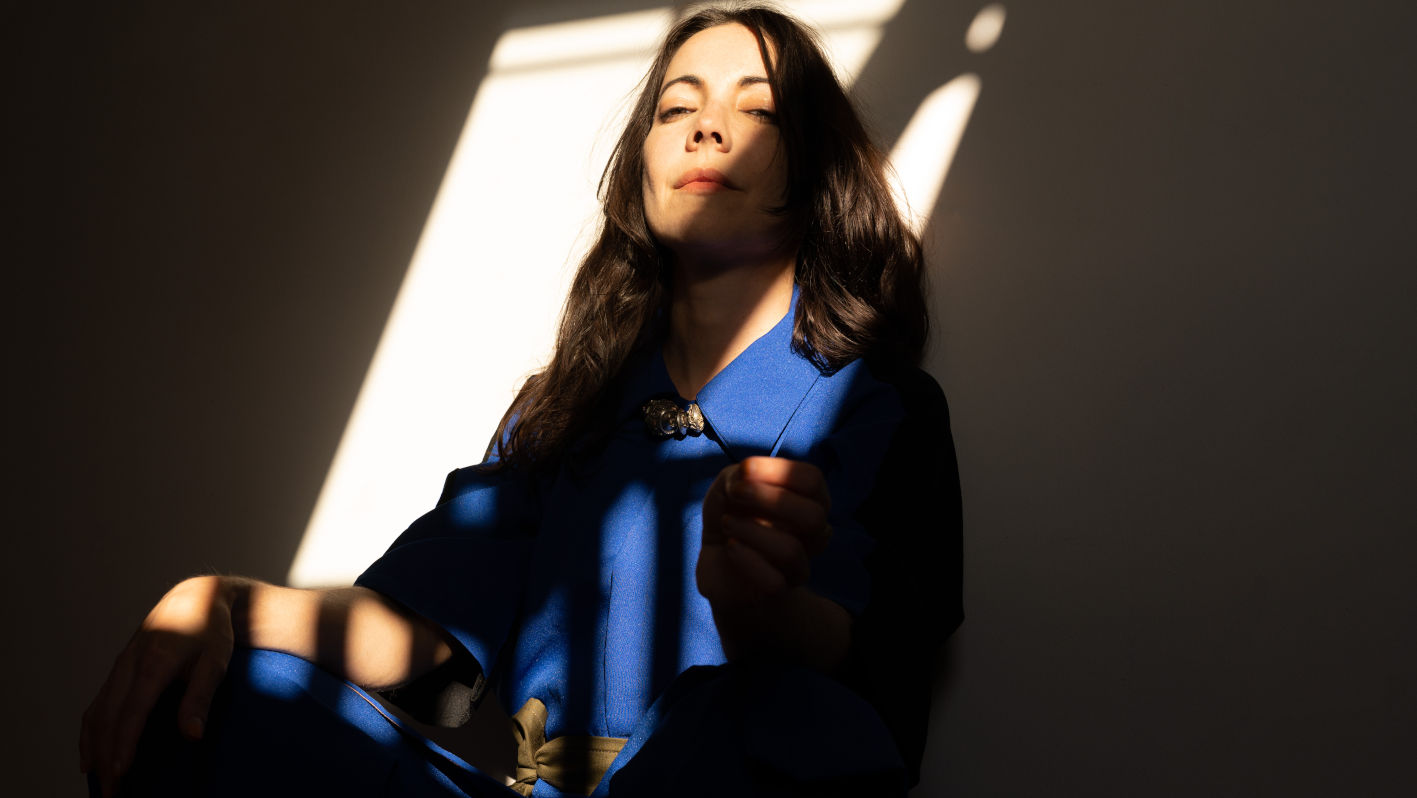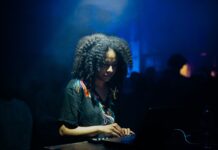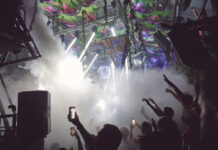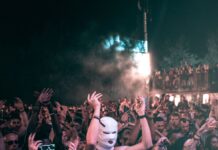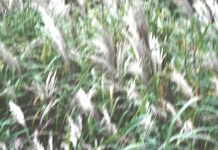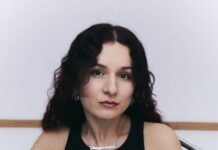Lucrecia Dalt (All photos by Camille Blake)
Lest hier die deutsche Version.
Lucrecia Dalt made a name for herself in several bubbles of cultural industry. Not only does the Colombian artist produce critically acclaimed, sensual music that manages to avoid the realm of stale conceptronica. She merges her sonic visions with installations and performances conjuring endless queues in front of botanic gardens and granting her reputation in the established art scene.
In a chat interview a few months after the first lockdown kicked in, she told us how to balance her diverse mixture of stylistic forms, why science and art go very well together and how she approaches her conceptional way of working.
How has lockdown been for you so far? Did you have to struggle a lot?
It’s a struggle in the long term, in the sense of becoming suddenly totally shortsighted. Not that being a musician gives any guarantee, but I was content with what the momentum was bringing me. So this stopping was in a sense brutal, but now with three months in, I’m somehow still positive.
How hard was it to be forced into this shortsighted mode? Especially when being used to thinking in long terms as a mostly conceptual artist?
It basically has shaken everything. In a state like this where you have a lot of time to think and a sense of imminent fear, everything gets questioned. It’s difficult to decide where to put the energy, how to look forward to things.
Do you feel it’s maybe a slightly better situation for an artist that doesn’t mainly rely on DJing and clubs? Or is it maybe even harder to come up with interesting concepts and projects in these testing times?
Both have some truth. I guess we need to add that it’s a privilege to be passing through all this in Germany. I’m conscious that I am in a better situation than many, definitely. Nevertheless we still have to care for family and friends, process the news, and get used to living in the very present–and feed it with good thoughts and processes.

Or the music you produce–what interests me a lot are these subtle, sometimes not so subtle South American influences you work into it. In which way do you feel your native country informed your art?
I think in every way, and this influence grows with time, or I find more and more value to having that upbringing. I love analyzing rhythm and melody, to find out what it is about those musical styles that I listened to as a child and a teenager that moves me so deeply. Although I’m not trying in any way to replicate or celebrate that music directly, or not yet.
„I’m not at all preoccupied to plot directly, I feel that the first thing, of course, is the music layer.“
So it’s not an urge to bring it in, it just happens naturally?
I don’t feel an urge to bring any kind of music into what I do, I just use these styles as sources that feed my process to learn, to analyse. I do get obsessed though about trying to decipher the „spirit“ in them and see how can I translate that to my music.
Is that something you always wanted to do in your music? How do you feel it has evolved?
That’s one aspect of the music making, but I just think music is the best format for me to put together all the things that obsess me. Specific sounds, textures, rhythms, mental processes as well as poetry, readings, stories, fictions and more.
It’s notable though, because a lot of people would probably wonder why it’s not audiovisual art then, in order to make it more understandable for an audience. Being able to plot more direct, overt messages, not rely on interpretation and individual feelings.
Part of it is that I’m not at all preoccupied to plot directly. I feel that the first thing, of course, is the music layer. If you like it, you enter that dimension, and you can stay there. But there are all these stories underneath that could connect with other obsessions you may have as well. And that’s wonderful. In the end, I think the most exciting thing in life is finding someone who’s obsessed with the same things as you are and to talk about that.
You use the word obsession a lot. This leads me to Anticlines’ opener, „Edge“.
I’m quite obsessive, indeed.
You talked about it as strongly and affirmatively sexual. On the other hand, the song’s inspired by the myth of El Boraro which adds this kind of soft/harsh, interesting aspect to sexuality. How do you manage to fuse all these aspects, not only in Anticlines but overall, in your conceptual art?
In that song specifically, I just used the myth as a metaphor, as a vehicle to write about another form of love, or in this case, yes, you guessed it–obsessive love. To love someone so much that you want to be able to feel their body from the other side of the skin. Overall, I don’t have a formula really. It all starts with basic things. Actually, the first thing I thought of is bubbles, how wonderful and mysterious they are. And from there I thought of a human bubble and then remembered El Boraro making these human bubble bodies walking in the night.
Were you familiar with this myth since your childhood days?
Vaguely, I perhaps remembered more myths like La Llorona, or La Patasola, El Mohan. La Llorona, for example, is a woman that cries at night for the loss of her children because she drowned them. It’s really interesting that kids grow up with this kind of stuff, with lots of fear.
Since „Edge“ is such a physical song, a trait that I would attribute to your music in general, can you even imagine music to be cut loose from the body?
The physic dimension is a very important aspect, especially in my performances. And it has become more so since I started to do multichannel performance.
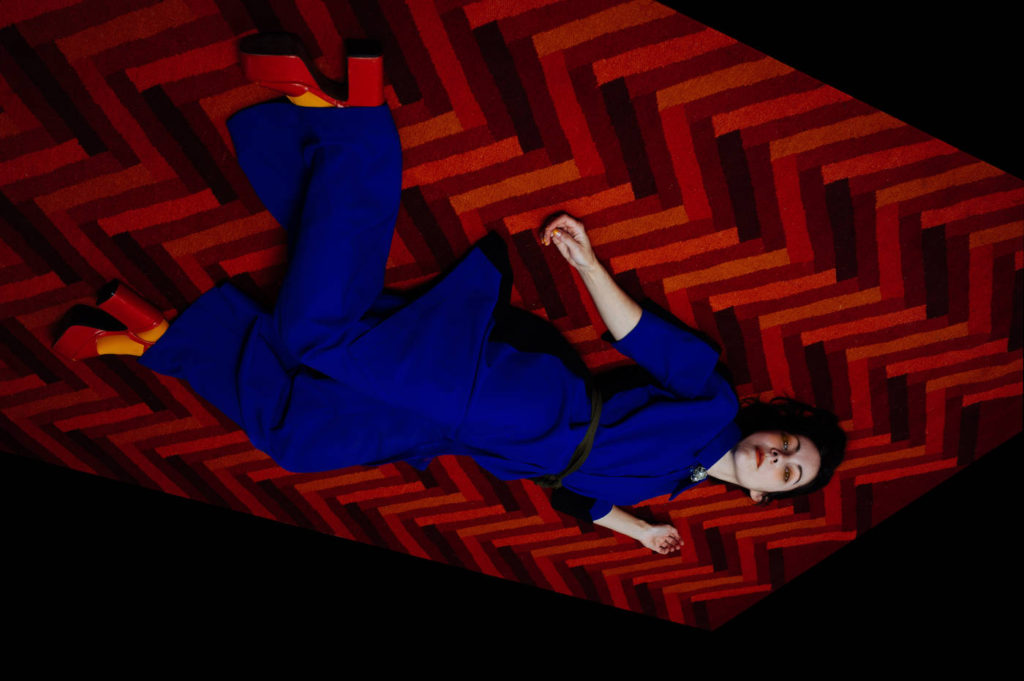
One thing that your performances and installations have in common with your records is a very strong conceptual thread – your projects all seem to come with an idea behind them. What are the advantages of this way of working?
I don’t have any advantages in mind when producing it or the notion that it could be interesting to talk about it. It comes from the desire to see how can I use my full potential, or how can I make things more effective, or how can I integrate several elements – and maybe make my life a bit more complicated!
How tempting or fruitful is it for you to combine art and science? Like in You Will Go Away One Day But I Will Not, for example. The subjects you merged there together with Maria Thereza Alves – art installations and the classification of plants – are usually perceived as quite segregated and since you have a scientific or at least technological background yourself, I wondered how you bring these two worlds together.
I don’t know why they have to be separated. I’m a civil engineer and a musician, and I make my own clothes, and it’s all part of the same body. That doesn’t mean I cannot sit down and play guitar anymore though, I do enjoy that a lot! However, I do think that, for someone that works alone, like me, with the music history weight we have on our shoulders, working in this way is a valid option. In any case we are in constant research, reading all day about all kinds of things, totally unfocused.
You mean having a framework and becoming more focused through that?
In a sense that you have to create your kind of universe as you are not in a collective process that could lead into other ways of working, like a jazz album for instance, or a band.
„I love to develop a relationship with a space, to correspond with it, to enhance something inherited in it.“
In the last months you did some installations and performances for spaces like the Mies van der Rohe Pavilion in Barcelona (Dazwischen), and the aforementioned installation in Berlin’s Botanic Gardens for CTM 2020. When you have the opportunity to create something for a space like this, what do you think about – the history of the building, its place in the world? Or is it more about the acoustics – a response to what the structure already sounds like?
I think mostly about gestures first, or scenes, which I don’t want to reveal fully, but I start to imagine elements I can have in the room. It’s more connected to the architectural features and how can I play with them through sound, light, performers, and my own presence in this specific place.
Dazwischen combined elements of sound installation, live performance, and something like experimental theatre, with the audience being led around the space in unexpected ways. After doing something like this, are ‚traditional‘ live performances, on a stage facing the audience, still interesting for you?
Absolutely. Both as a listener and as a performer, it’s just another format for me. But if I am given the chance to do something special, like what I did at the Mies van der Rohe Pavilion, I will take it with full force. I love working on projects like this, to develop a relationship with a space, to correspond with it, to enhance something inherited in it. For example, in Barcelona, I wanted to enhance that concept of inside-outside blur that you feel in that building.
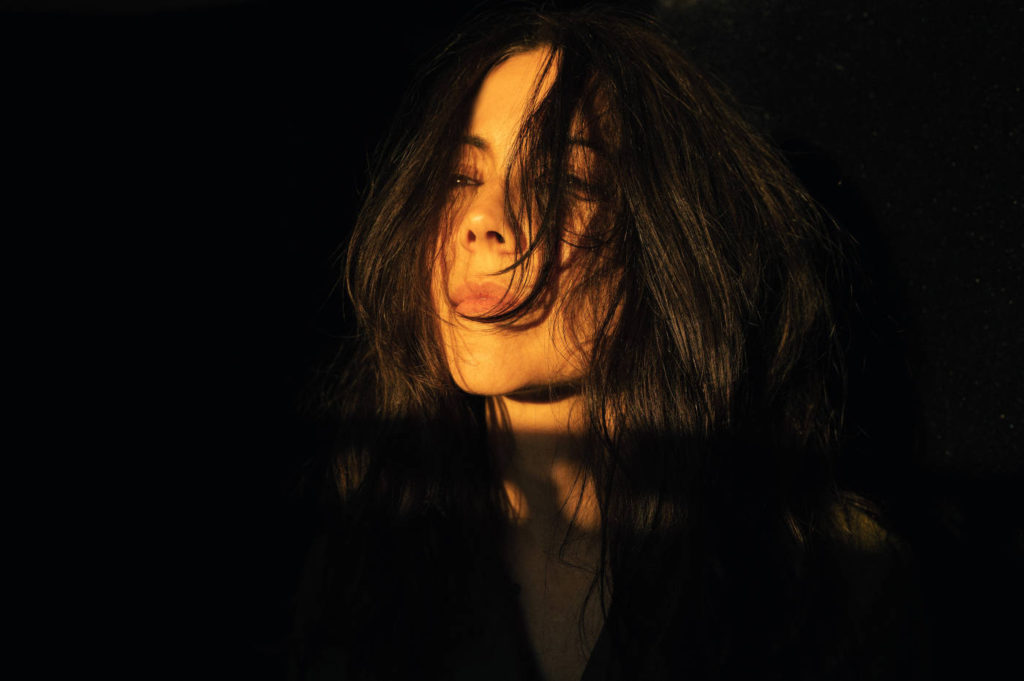
What did you want to enhance in Berlin?
In that case it was different because the invitation to that project came with a very specific format. The whole installation was experienced with headphones on, and as a collaboration with another artist. So as the format was with headphones, I thought more of layers of voices that are not heard, that you only have access to through this device.
Which role does colonization in South America play for you as an artist? Is it something you want to work more with when planning new projects?
In this specific project it played a big role. And I think as one needs ways to stop replicating patriarchal, oppressive models of being, it just becomes inherently necessary as a way of living, becoming, existing.
Your sound installations are very playful with regards to acoustic space, messing with the listener’s expectations and creating audio illusions, mixing up the ‚close‘ and the ‚far away‘. Can you tell me about how you create these effects and sensations?
I start to have images happening in the space – I look at a balcony and see a possibility there, of some kind of micro performance, or I start to think of how I can make my voice come from random corners. When I once visited a space to think about ideas, one of the windows opened without anyone doing anything. I took it as an element I must include, somehow. Then, I start to think about how can I correlate the space with the contents that I will perform. I’m calculating in sudden events, I take them as an inspiration.
So an important step is to get a good overview of the place and to be spontaneous, to some extent?
Visiting a space is definitely key, and of course, even though I design a full, let’s say, score, I always leave something open to improvisation because I don’t like to perform with very fixed elements.
Lucrecia Dalt’s recent Album No Era Sólida was released on RVNG Intl. in September.
